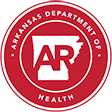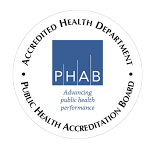Data from Animals & Insects
| Year | |||||||||||
| Tick Related Illness | 2011 | 2012 | 2013 | 2014 | 2015 | 2016 | 2017 | 2018 | 2019 | 2020 | 2021 |
| Anaplasmosis | 8 | 8 | 7 | 15 | 16 | 15 | 6 | 8 | 9 | 12 | 12 |
| Babesiosis | 0 | 0 | 0 | 0 | 0 | 1 | 0 | 2 | 1 | 1 | 2 |
| Bourbon Virus | 0 | 0 | 0 | 0 | 0 | 0 | 0 | 0 | 1 | 0 | 0 |
| Ehrlichiosis | 53 | 84 | 165 | 237 | 194 | 203 | 207 | 141 | 232 | 160 | 119 |
| Heartland Virus | 0 | 0 | 0 | 0 | 0 | 0 | 2 | 1 | 1 | 0 | 0 |
| Lyme disease | n/a | n/a | n/a | n/a | 1 | 7 | 7 | 4 | 19 | 12 | 11 |
| Spotted Fever Rickettsiosis | 558 | 835 | 488 | 826 | 891 | 821 | 1,216 | 1,066 | 1,085 | 215* | 169 |
| Tularemia | 39 | 26 | 41 | 43 | 24 | 24 | 32 | 57 | 95 | 36 | 21 |
| Year Total | 658 | 953 | 701 | 1,121 | 1,126 | 1,071 | 1,470 | 1,279 | 1,443 | 221 | 334 |
*The case definition for Spotted Fever Rickettsiosis was revised in 2020, resulting in fewer reports meeting confirmed or probable case definition for surveillance purposes.
| Year | |||||||||||
| Mosquito Related Illness - Locally Acquired | 2011 | 2012 | 2013 | 2014 | 2015 | 2016 | 2017 | 2018 | 2019 | 2020 | 2021 |
| Eastern equine Encephalitis (EEE) | 0 | 0 | 1 | 0 | 0 | 0 | 0 | 0 | 0 | 0 | 0 |
| St. Louis Encephalitis (SLE) | 3 | 0 | 0 | 0 | 0 | 0 | 0 | 0 | 0 | 0 | 0 |
| California Serogroup Encephalitis | 0 | 1 | 0 | 0 | 0 | 0 | 0 | 0 | 0 | 0 | 0 |
| West Nile virus (WNV) | 1 | 64 | 18 | 11 | 18 | 9 | 18 | 8 | 9 | 1 | 9 |
| Year Total | 4 | 65 | 19 | 11 | 18 | 9 | 18 | 8 | 9 | 1 | 9 |
| Year | |||||||||||
| Mosquito Illness in Animals - Horses | 2011 | 2012 | 2013 | 2014 | 2015 | 2016 | 2017 | 2018 | 2019 | 2020 | 2021 |
| EEE (horses) | 0 | 1 | 3 | 0 | 0 | 1 | 2 | 0 | 7 | 0 | 5 |
| WNV (horses) | 0 | 9 | 8 | 1 | 3 | 10 | 1 | 2 | 1 | 0 | 0 |
| Year Total | 0 | 10 | 11 | 1 | 3 | 11 | 3 | 2 | 8 | 0 | 5 |
| Year | |||||||||||
| Mosquito Travel Associated | 2011 | 2012 | 2013 | 2014 | 2015 | 2016 | 2017 | 2018 | 2019 | 2020 | 2021 |
| Malaria | 6 | 4 | 2 | 7 | 9 | 6 | 5 | 2 | 0 | 3 | 2 |
| Chikungunya Virus | 0 | 0 | 0 | 7 | 4 | 1 | 0 | 0 | 0 | 0 | 0 |
| Dengue | 0 | 1 | 2 | 4 | 1 | 3 | 0 | 2 | 3 | 1 | 0 |
| Zika | 0 | 0 | 0 | 0 | 3 | 16 | 2 | 0 | 0 | 0 | 0 |
| Year Total | 6 | 5 | 4 | 18 | 17 | 26 | 7 | 4 | 3 | 4 | 2 |
| Year | |||||||||||
| Other Zoonotic Related Illness | 2011 | 2012 | 2013 | 2014 | 2015 | 2016 | 2017 | 2018 | 2019 | 2020 | 2021 |
| Animal Rabies | 60 | 131 | 152 | 151 | 73 | 23 | 42 | 31 | 26 | 33 | 24 |
| Blastomycosis | 6 | 9 | 9 | 6 | 22 | 8 | 12 | 4 | 25 | 23 | 27 |
| Brucellosis | 3 | 1 | 3 | 0 | 1 | 3 | 1 | 2 | 3 | 2 | 2 |
| Chagas Disease | 0 | 0 | 0 | 1 | 0 | 2 | 0 | 0 | 2 | 1 | 2 |
| Coccidioidomycosis | 1 | 0 | 0 | 0 | 7 | 1 | 7 | 6 | 11 | 8 | 8 |
| Histoplasmosis | 66 | 51 | 56 | 67 | 60 | 73 | 159 | 40 | 88 | 69 | 87 |
| Q-Fever | 5 | 1 | 3 | 5 | 3 | 5 | 4 | 3 | 2 | 0 | 2 |
| Toxoplasmosis | 1 | 1 | 4 | 9 | 2 | 11 | 12 | 15 | 20 | 26 | 82 |
| Typhus fever-fleaborne, murine | 1 | 2 | 2 | 3 | 2 | 2 | 1 | 0 | 9 | 2 | 0 |
*The Arkansas Department of Health (ADH) is an active participant in the National Electronic Disease Surveillance System (NEDSS), developed by the Centers for Disease Control and Prevention (CDC) to improve the public health monitoring of diseases, and utilizes a NEDSS Based System (NBS) for notifying the CDC of reportable disease cases. Cases are identified as lab reports submitted to the ADH that has either a Confirmed or Probable case status as defined by the Council of State and Territorial Epidemiologists (CSTE) case definition position statements. These position statements are reviewed and revised periodically as needed, so the case definition may change between years which could result in a significant change, either increase or decrease, in the number of case counts reported each year.
| Zoonotic Reports |
| Zoonotic Disease Report: 2021 | 2020 | 2019 | 2018 |
| Tickborne Disease (2020) |
| Mosquito Surveillance Report (2019) |
For Health Care Professionals: Case Definition
The Arkansas Department of Health utilizes the Centers for Disease Control and Prevention (CDC) case definitions for reporting and surveillance purposes for all tick and mosquito related diseases (including Lyme).
Surveillance case definitions are not intended to be used by healthcare providers for making a clinical diagnosis or determining how to meet an individual patient’s health needs.
Current case definitions for all diseases can be found on the CDC website.
Points for Patients
The Arkansas Department of Health is not responsible for diagnosing and testing for tickborne and most mosquito-related diseases. ADH is mainly responsible for reporting laboratory and healthcare professional-confirmed cases for surveillance purposes. It is important to recognize cases of disease when they occur, so ADH examines every disease-related lab result of tick and mosquito-related illness that is reported. Ticks and mosquitoes can be found throughout Arkansas. To avoid all tickborne and mosquito-related illnesses, you can take these measures to prevent insect bites - click here.


